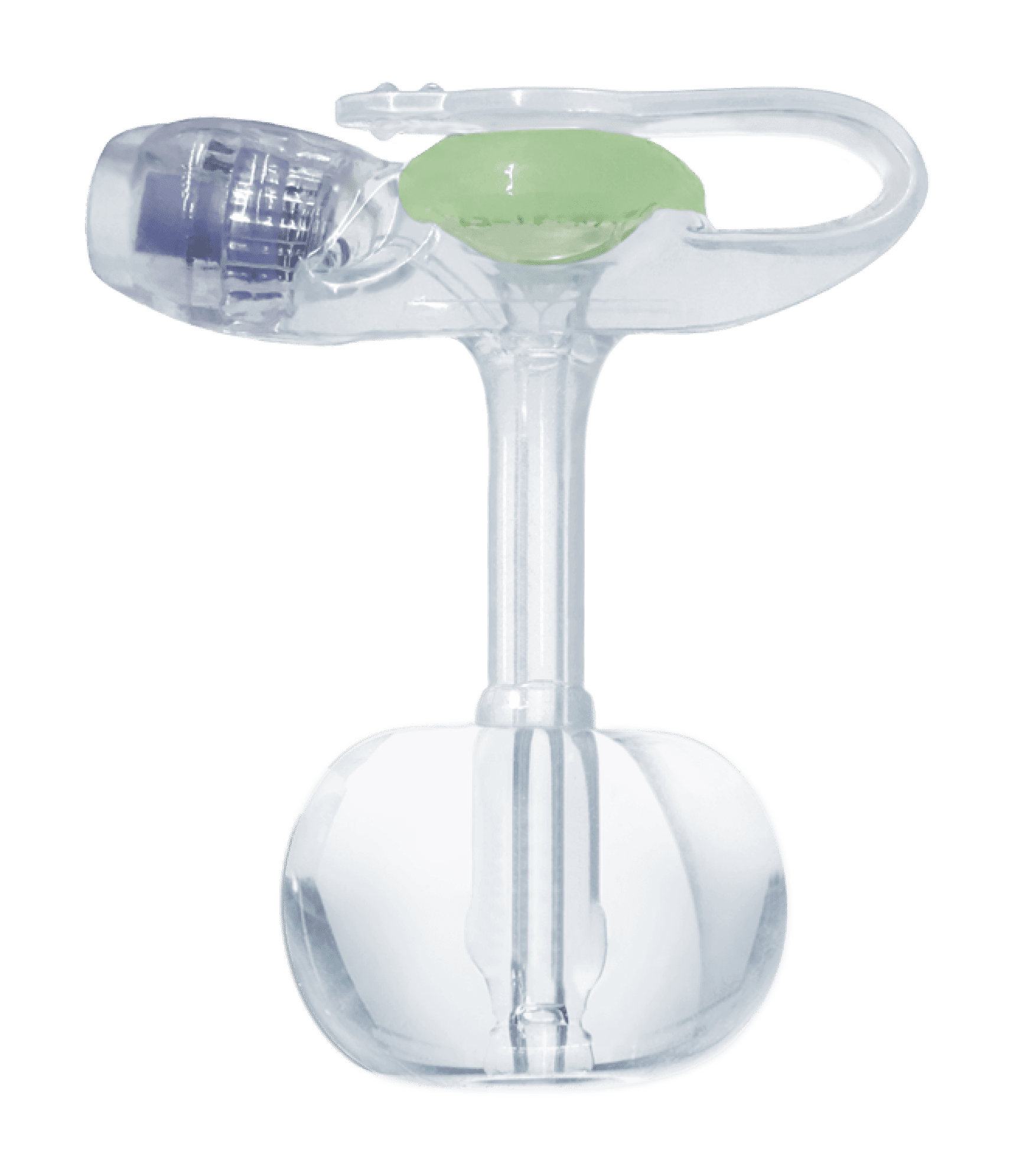
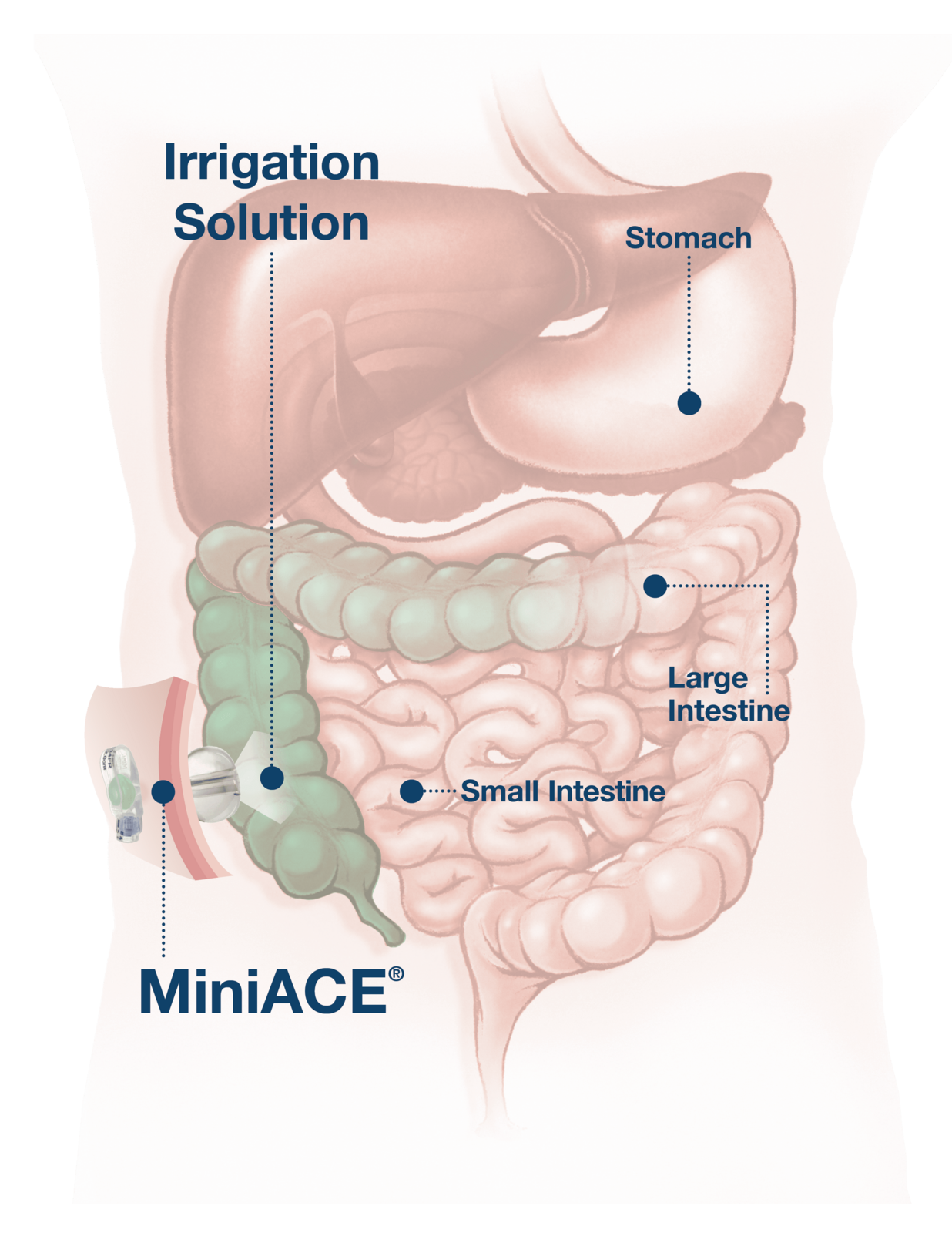
What is an Antegrade Enema?
AMT’s MiniACE® Button
An Antegrade Enema is an alternative way to give an enema. A retrograde enema is typically given by inserting a tube into the rectum and administering a solution that helps empty the colon. Alternatively, an antegrade enema is given by inserting a tube into the starting point of the colon (known as the cecum) and administering irrigation fluid that helps empty the bowels. The tube is inserted through a stoma, which is a surgical opening that connects the abdomen to the colon. A retrograde enema is performed from the “bottom up” while an antegrade enema is performed from the “top down”.
What does ACE mean?
ACE stands for Antegrade (in a forward direction) Continence (with bowel control) Enema (washout of the large intestine or colon). ACE might be recommended for patients who struggle with severe constipation or fecal incontinence (difficulty controlling bowel movement). Conditions which can contribute to severe constipation or fecal incontinence include Hirschsprung’s Disease, spina bifida, gastrointestinal dysmotility, malformations, and more. An antegrade enema might facilitate a more complete flush of the colon versus a traditional retrograde enema. The ACE procedure can allow for self-administration of enemas, which can increase independence and improve quality of life for some patients.
Click here to download the MiniACE® Button brochure.
Types of ACE Procedures: Appendicostomy and Cecostomy
MiniACE® is cleared for both Appendicostomy (MACE) & Cecostomy!
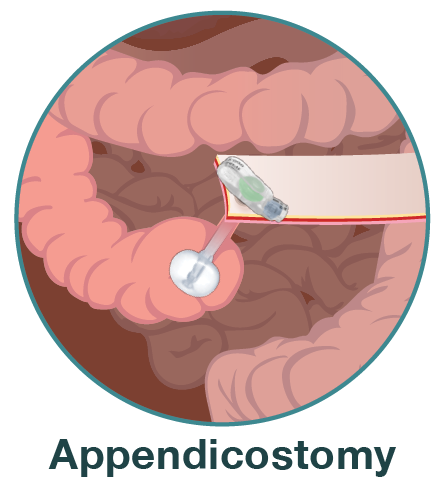
Appendicostomy
An appendicostomy, better known as the Malone Procedure (MACE), is a surgery that creates a pathway between the large intestine and the abdominal wall using the appendix. The appendix is a small tube-like tissue structure that extends off the first part of the large intestine (the cecum). A stoma plug or a tube device, like the MiniACE®, might be placed through the appendix pathway. The MiniACE® facilitates antegrade enemas by allowing direct passage of irrigation fluid into the large intestine.
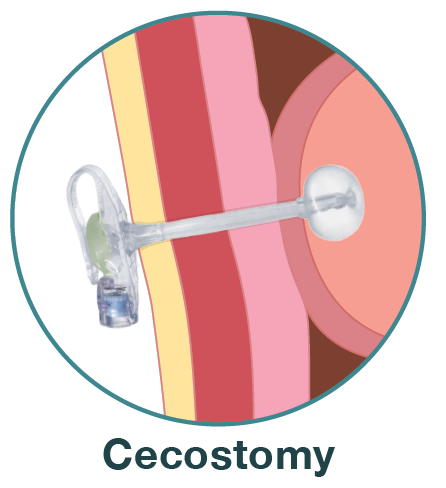
Cecostomy
A cecostomy is a surgical procedure wherein a channel is created between the abdomen and the first part of the large intestine (the cecum). A tube device, like the MiniACE®, is then placed directly into the stoma. The MiniACE® facilitates antegrade enemas by allowing direct passage of irrigation fluid into the large intestine.
When the MiniACE® is placed into a cecostomy stoma, your healthcare provider might refer to it as a “C-tube”.
“This is a remarkable contribution to the management of patients with chronic defecatory disorders (constipation and incontinence). The ease of use and replacement will make the lives of our patients and families so much better,” said Edward M. Barksdale, Jr., MD, Surgeon-in-Chief, University Hospitals Rainbow Babies and Children’s Hospital. “This is what many of us have been long waiting for to enhance the lives of our patients and families.”

MiniACE® is the only FDA cleared balloon button device for Antegrade Continence Enema (ACE) procedures.
From Coils to Comfort, Upgrade to the MiniACE® Today
- The MiniACE® internal retention balloon is gentle on the intestinal walls as opposed to the coils and exposed interior tip of the Chait Trapdoor™
- AMT’s MiniACE® Balloon Button is 450% more secure within the stoma as compared to the Chait Trapdoor™* which reduces the risk of accidental pull-outs
- Tapered tubing at the external bolster, along with an Exclusive AMT Balloon with a unique apple-shape, reduce the risk of leaks
- Anti-leakage valve prevents backflow of irrigation fluids
- MiniACE® is cleared for initial placement whereas Chait Trapdoor™ is not
- Patient-specific sizing of the MiniACE® leads to less movement (“pistoning”) within the stoma which can reduce the risk of nerve damage and pain at the stoma site
- MiniACE® can be easily exchanged in the exam room which means no anesthesia, no radiation, and no expensive trips to IR/OR
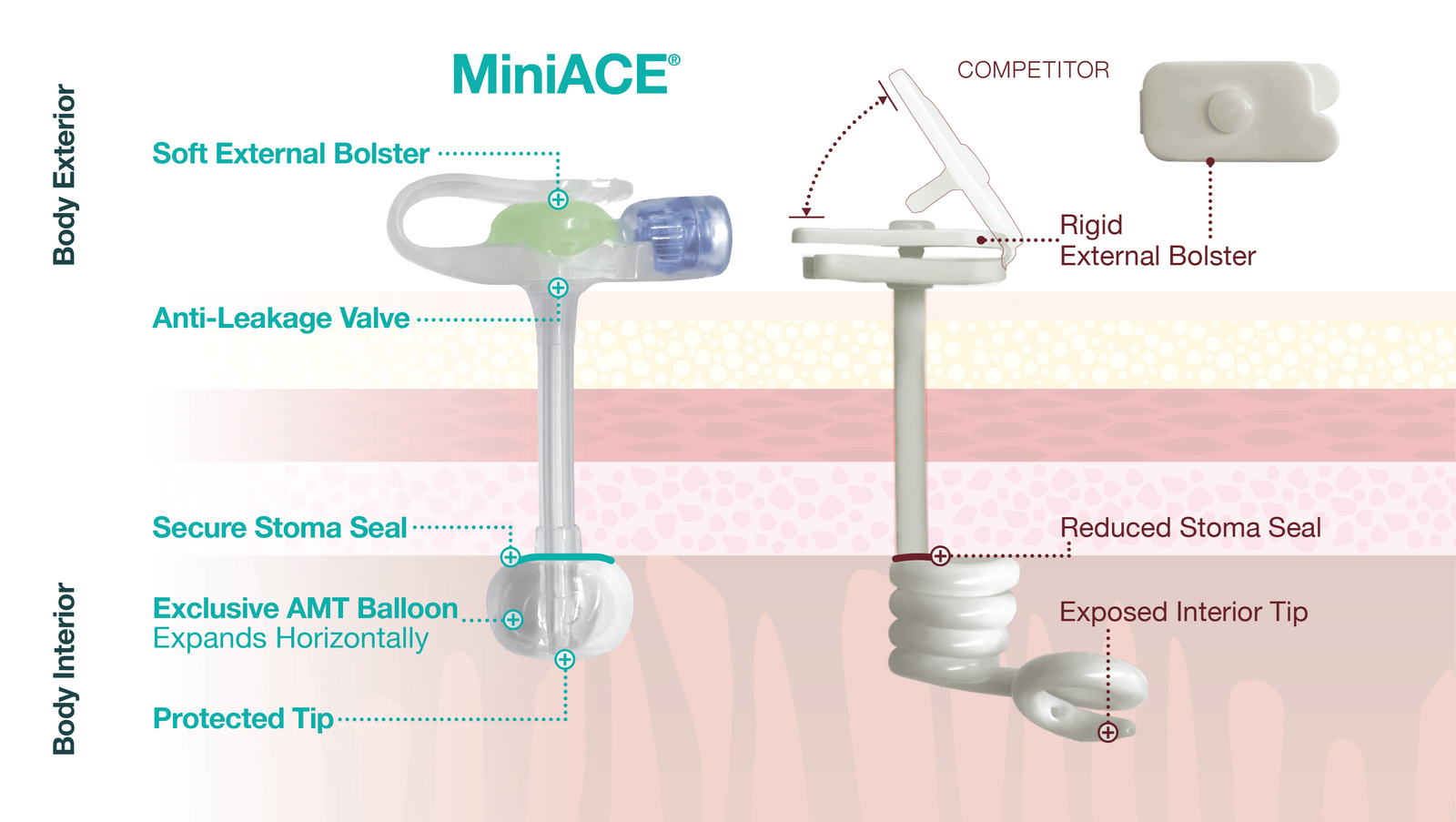
“As a colorectal surgeon, I see patients who are struggling with their cecostomy device; leakage and pull-outs are common issues. The MiniACE® balloon button can mitigate a lot of these issues,” said Marc A. Levitt, MD, Chief of Colorectal and Pelvic Reconstructive Surgery, Children’s National Medical Center, Washington D.C. “And, with a 10F option available now, patients with Malones who don’t want to catheterize the channel or develop narrowing (stenosis) also have a great alternative.”
MiniACE® Innovations
It’s all About the Balloon
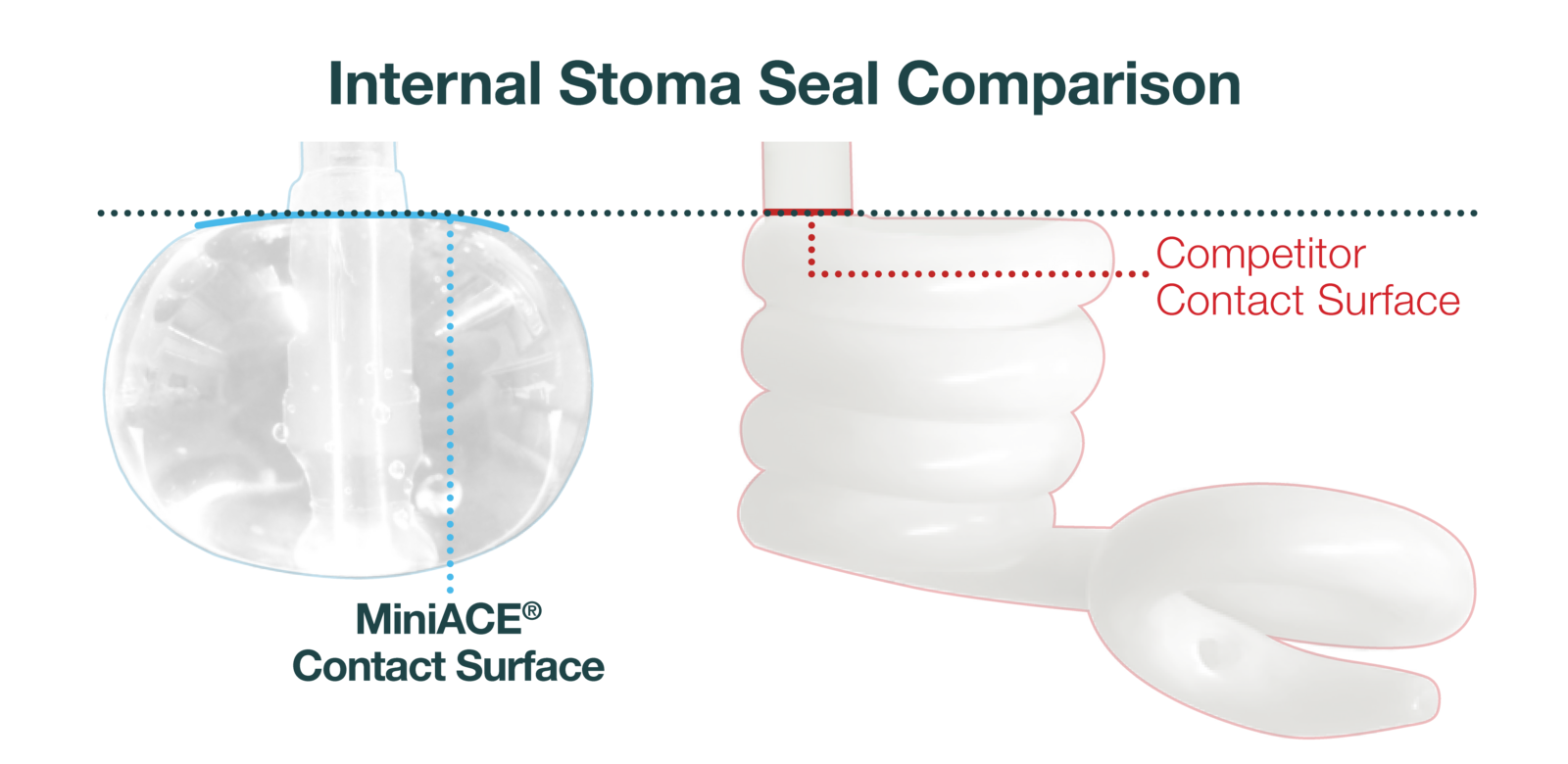
An Adjustable Balloon
Balloon fill volume can be easily adjusted for a custom-fit, as recommended by your healthcare provider. A better fit can improve patient comfort and reduce leaks.
A Durable Balloon
Made from medical-grade silicone, which can increase the longevity of the MiniACE®.
A Better Balloon
Exclusive AMT Balloon with unique “apple-shape”, is designed to cover more surface area, take up less space in the colon, and minimize leaks at the cecostomy site. When filled, the AMT balloon grows horizontally to provide a larger seal surface and may help to reduce granulation tissue.
Safe and Secure: Irrigation Set Attachment
AMT’s MiniACE® Irrigation Set locks into place with a simple turn! The connection between the MiniACE® Button and its irrigation set is 10x stronger than the competition*

*Conclusions are based on internal testing.
Part Numbers & Ordering Information
By expanding the MiniACE® portfolio to include a 10F option, AMT is offering patients a pathway to convert from their current cecostomy/appendicostomy device to a balloon button device with minimal dilation.
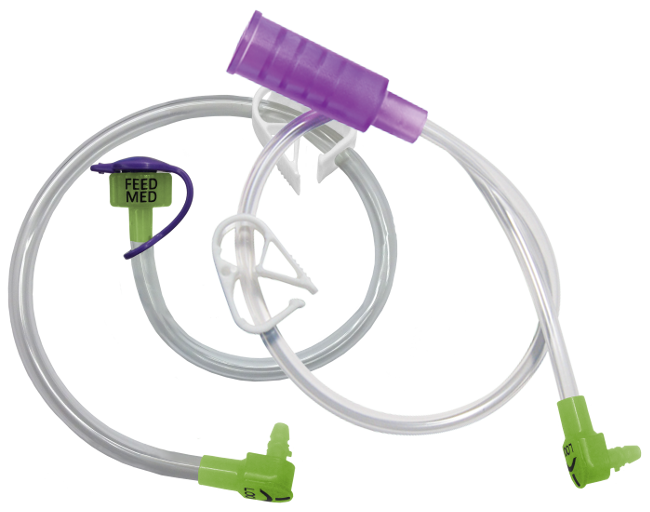
Frequently Asked Questions
AMT has provided this information as an educational resource tool. This is not intended as a substitute for professional medical care. Your FIRST source of information should be your healthcare provider.
Why is my doctor recommending a cecostomy/appendicostomy?
A cecostomy may be needed for very severe constipation that is not responding to laxatives or other methods of relieving the large intestine or colon. A cecostomy can also be used to treat fecal incontinence (inability to control bowel function).
If constipation is causing severe pain or other potential bodily harm, the gastroenterologist may recommend a cecostomy. Conditions that can lead to severe fecal incontinence that might require a cecostomy include:
- The anus does not allow the material to pass properly (an imperforate anus)
- Spinal abnormalities, such as spina bifida
- A combination of the above conditions
- Other muscular conditions
What is a cecostomy tube?
A cecostomy tube, or C-tube, (like the MiniACE®) is a thin tube that is placed into your large intestine through a stoma in your abdomen. The MiniACE® can either be placed directly into the cecum (cecostomy) or through the appendix and into the large intestine (appendicostomy, MACE). The MiniACE® allows you to put a flushing (irrigating) solution directly into your large intestine so you can perform an antegrade continence enema (ACE).
What does ACE stand for?
Antegrade Continence Enema
What does MACE stand for?
MACE: Malone Antegrade Continence Enema
What is the difference between cecostomy and appendicostomy (MACE)?
In a cecostomy, a tube (like the MiniACE®) is used. The MiniACE® is placed in the first part of the large intestine, also called the cecum. Irrigation fluid is infused into the cecum through this tube, which helps move fecal matter out of the body through the rectum.
In an appendicostomy (also known as a MACE), the MiniACE® tube travels through the appendix and into the large intestine.
How do I take care of my MiniACE® at home?
The stoma area should be cleansed daily with a mild soap and water. The stoma site should be clean and dry at all times.
Does AMT sell Enema Bags (bags for my enema fluid solution)?
No, AMT does not sell Enema Bags.
Does my MiniACE® need to be periodically exchanged for a new button?
For optimal performance, it is recommended that MiniACE® Button devices be changed every 3 months or as often as indicated by your healthcare professional. Proactive replacement of the device will help ensure optimal functionality and will help prevent unexpected device failure.
What sizes do you offer in the MiniACE®?
We offer 10F, 12F and 14F MiniACE® devices, with stoma lengths ranging from 0.8 cm to 10.0 cm.
What components are included in the kit?
- MiniACE® Button
- Irrigation Set (part number 2-1221: bolus, right-angle)
- 5 cc syringe
- Introducer
- Gauze
- Lube packet
What type of Irrigation Sets do you offer?
AMT sells bolus, right-angle irrigation sets in boxes of 10
- 2-1221 (12”) – Box of 10, non-sterile
- 2-2421 (24”) – Box of 10, non-sterile
Do I need a prescription to order a MiniACE®?
Yes
Why is there a “For Colon” sticker attached to the Irrigation Set?
AMT must label our irrigation sets with a “For Colon” sticker, per FDA guidance. Your healthcare provider may have given you a “For Colon” sticker for your device; AMT provides this label in accordance with FDA guidance.
Chait Trapdoor™ is a trademark of Cook® Medical.
ENFit® is a registered trademark of GEDSA, Inc. or its affiliates.
 Order Info
Order Info